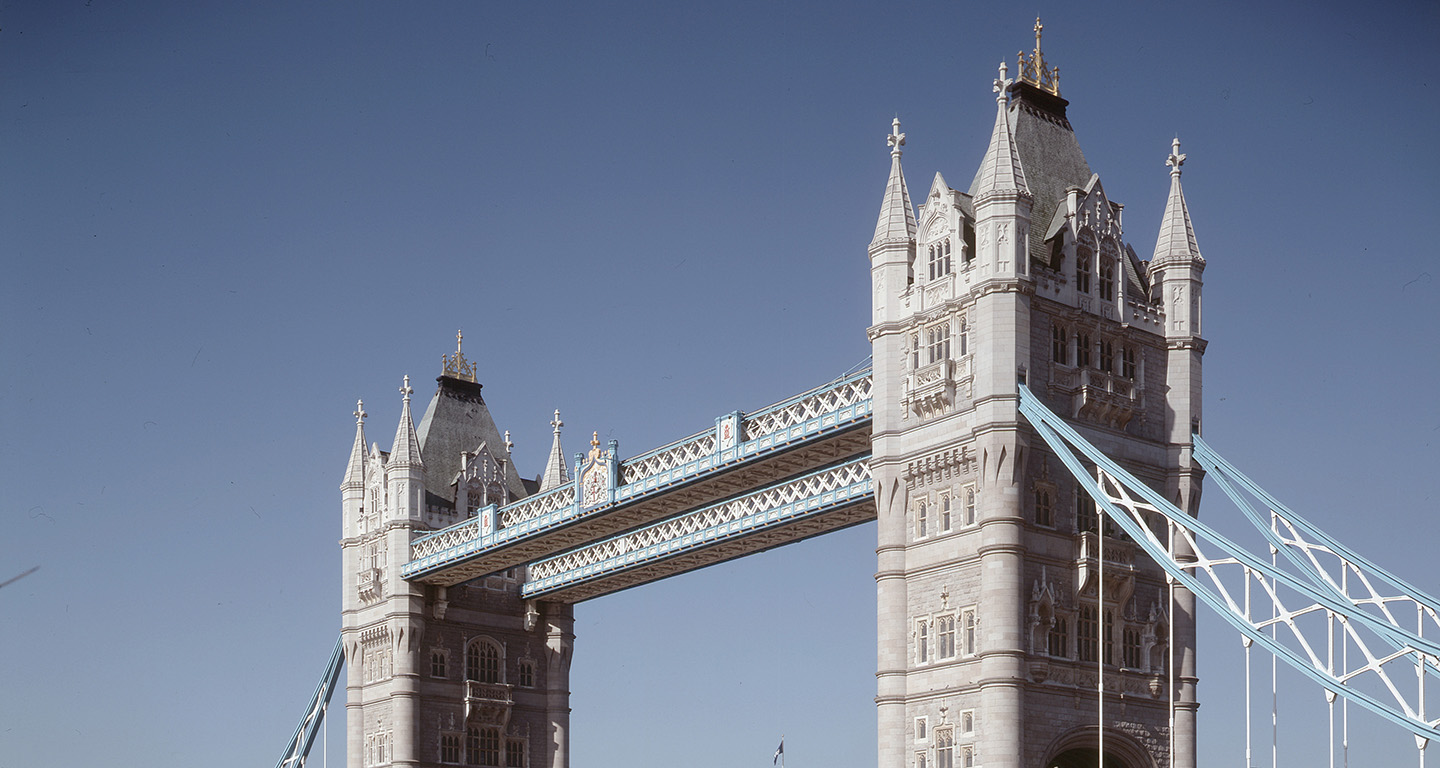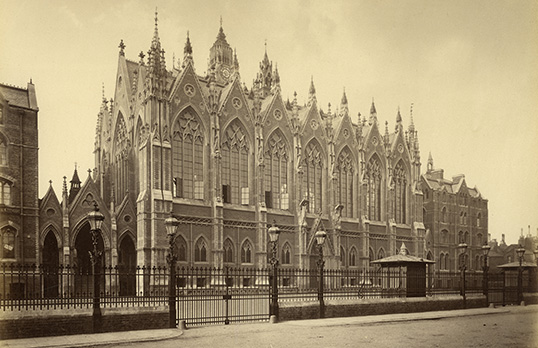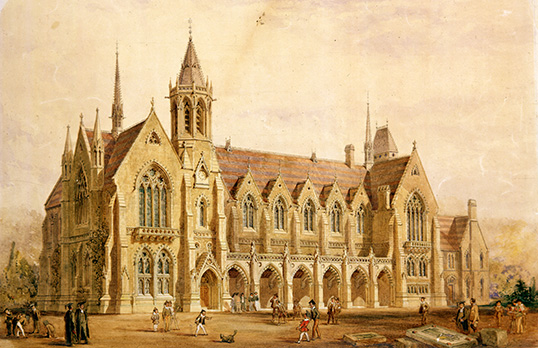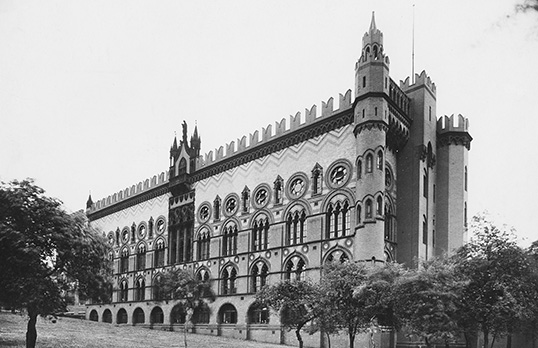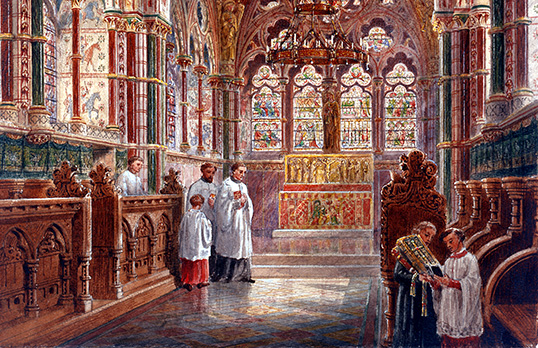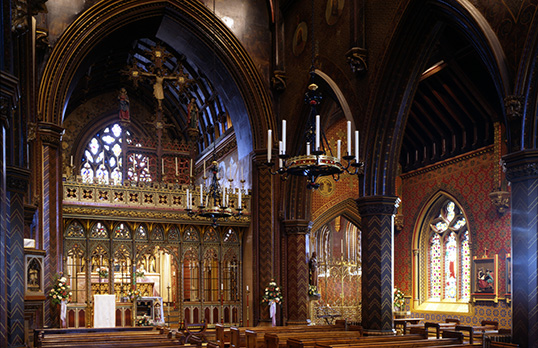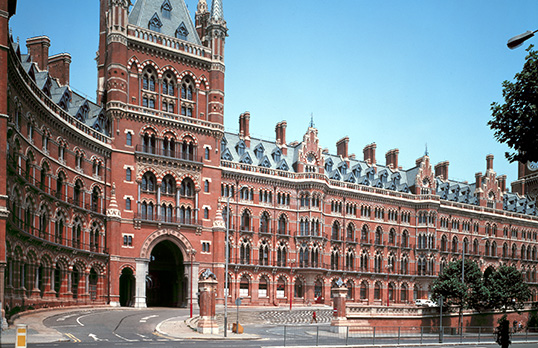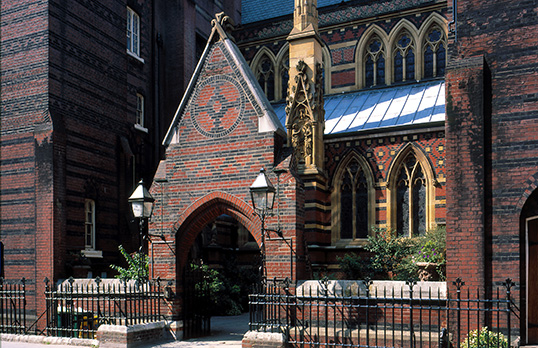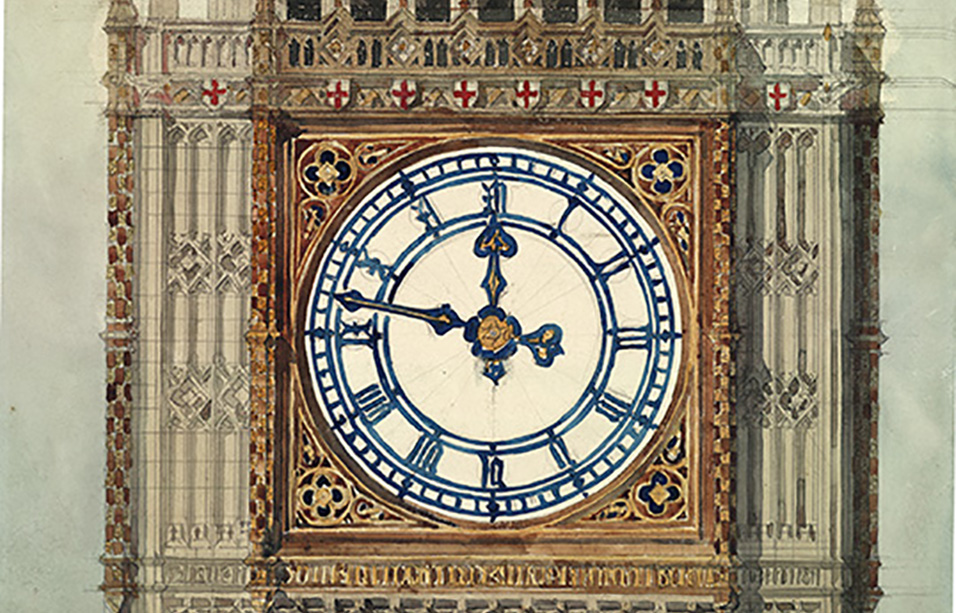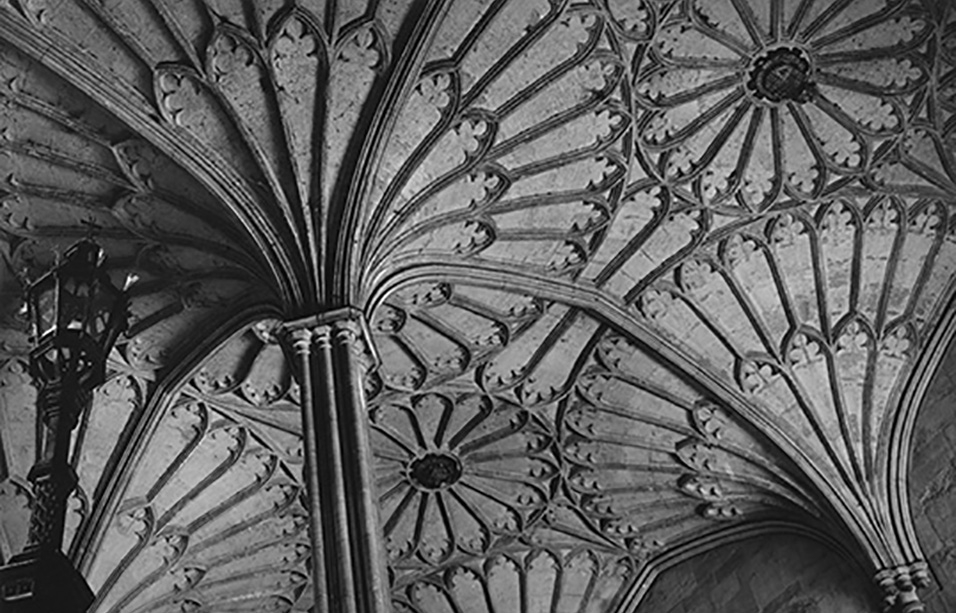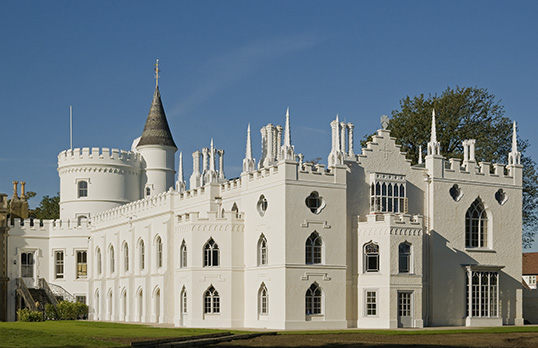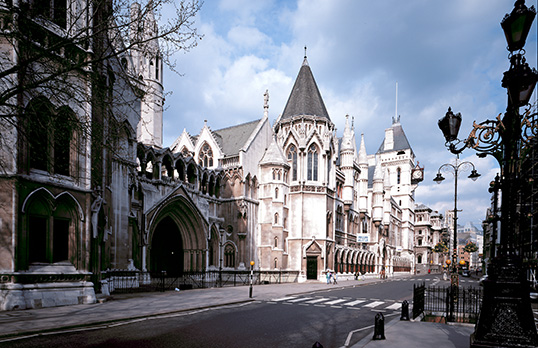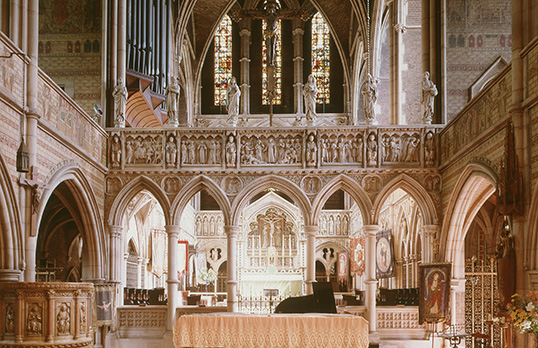The Gothic Revival was a conscious movement that began in England to revive medieval Gothic forms, from the second half of the 18th century and throughout the 19th century. The 18th century examples were often domestic, with highly decorative interiors, seen at Strawberry Hill, making the style fashionable. By the early 1800s though, scholarship on medieval Gothic was growing, and a more archaeological approach emerges. This includes an increasing interest in preserving and restoring older buildings, with a need to understand the different styles of Gothic architecture.
In 1817, the architect Thomas Rickman is one of the first to label the different styles of medieval architecture. He produces a chronology, entitled; ’An Attempt to Discriminate the Styles of Architecture in England from the Norman Conquest to the Reformation’. In his account he divides the period into four parts; Norman style (1066-c.1190); Early English style (c.1190-c.1300): Decorated English (c.1300-c.1390): Perpendicular English (c.1390-c.1540). These definitions were soon adopted and became the basic conceptual categories of the Gothic Revival for the rest of the 19th century.
But the key protagonist for the Gothic Revival by much of Victorian England was the architect, Augustus Welby Northmore Pugin (1812-1852). After helping his father to survey and record medieval buildings he became convinced that Gothic architecture was not only superior aesthetically, but also morally to Classical architecture.
In 1836 he published ‘Contrasts’, in which he compares different types of contemporary buildings with similar ones from the Middle Ages. For example, under ‘Contrasted Residences for the Poor’, a gracious medieval almshouse is contrasted with a contemporary prison. The book was a best seller, with many architects taking up the cause. The building of the Houses of Parliament cements it as a national style, with many public buildings following suit and there is an ambitious programme of church building, including restoration. The revival lasted until the 1870s, when other historical revivals emerged.

